Tag Archive: Collaboration
January 22, 2015
“If you bring the appropriate people together in constructive ways with good information, they will create authentic visions and strategies for addressing the shared concerns of the organization and community.”
David Chrislip

In our work at IISC, we occasionally reference David Chrislip’s “collaborative premise” (see above) as a way of orienting people to some of the key components of effective collective and net work. Given our emphasis on effective stakeholder engagement and process design, we generally focus on the first two elements more so than the last around good information, which does not mean we think it doesn’t matter. In fact, recently I’ve been observing some interesting dynamics around the data conversation in various network building and collective impact projects that we support.
Invariably, it seems that there are those who are quite concerned about ensuring that a given collective effort has the “right data” and that people are being “rigorous” in their approach to problem/opportunity analysis and solution generation. While understanding the need to have and use good data, we also think that it’s important to ask the question – Data for what? People often say they want data to ensure that they are not making uninformed and overly subjective judgments. Understandable. Furthermore it is sensible to want to seek out a baseline to be able to measure progress as a change effort moves forward. This said, I see a number of pitfalls in what can sometimes become the drumbeat for data.
Read More
January 13, 2015
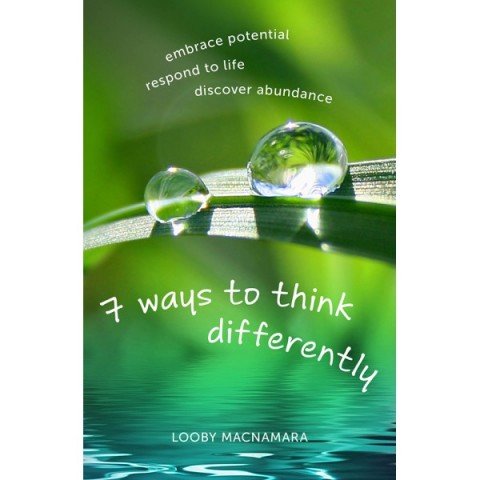
About 20 years ago I was introduced to the field of ecological design called permaculture, not in any great depth mind you, but from what I learned at the time, I was struck by how refreshing, sensible, and vital the practitioners’ perspective and approach were. Since then, and especially in recent years, interest in permaculture seems to have significantly grown (including my own) and its principles stretched beyond sustainable agriculture to human communities. Looby MacNamara is one of the teachers and practitioners who is helping with the more widespread application of permaculture principles. I just finished reading her short book, 7 Ways to Think Differently, which I recommend. In it she unites different ways of thinking (such as systems thinking and solutions thinking) with the underlying philosophical and methodological elements of “regenerative design.”
For me, one particularly fertile area is “abundance thinking.” I have to offer a bit of a pre-qualification that the word “abundance” can be used in certain contexts that I find off-putting, especially when there is little demonstrated understanding of existing structural inequities in society. That said, I think that “leading with abundance” as a mental exercise can provide valuable insights and approaches to social change. Here are a few thoughts, and I invite additions, reactions and push back: Read More
November 21, 2014

It probably goes without saying that learning requires reflection. This holds true for individuals and groups, and yet what I find is that many collaborative efforts can fail to build adequate reflection time into their work. Often it seems that reflection can be cast aside in favor of “getting stuff done” and because, “There is so much to do!” And ironically, what can ensue is an overall and ongoing sense of impatience and frustration that “we aren’t doing anything or enough.” Experience shows that when people in networks and collaborative change work do pause to reflect, there is much value to be gained.
The other day I worked with the core team of a regional network focused on food system change, and we took time to reflect on what the past couple of years of work have yielded at individual, collective and systemic levels. People offered up their own reflections, as well as those garnered from informal interviews with others in the network. The result was eye-opening, affirming and provided a collective boost. What we agreed is that considerable and important development has occurred over time, including: Read More
October 29, 2014
“Our success is built on partnership, sharing success and sharing credit.”
– Sec. Chuck Ross
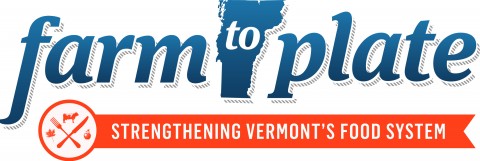
“The mojo is in the motto.” With these words, Secretary of Agriculture Chuck Ross opened the doors and conversation on the fourth annual Vermont Farm to Plate Network convening last Thursday in Killington. Each of the past four years Secretary Ross has brought some critical words of encouragement and motivation to this fall convening, and by invoking the state motto – “Freedom and Unity” – at this year’s opening he seemed to hit the right chords at a critical moment in the evolution of the network.
In 2011, Farm to Plate launched to great excitement and some anxiety as it positioned itself as a cross-sector collaborative network to carry out a strategic plan to double local food production in Vermont in 10 years time, contributing to job and economic growth as well as food access in a state that sees high rates of poverty. Since then, as both Ellen Kahler of the Vermont Sustainable Jobs Fund (the backbone organization for Farm to Plate) observed and remarked through a plenary retrospective, it has managed to find its collaborative footing and grow significantly in numbers (more than 300 organizations strong). And importantly, it has seen real results in terms of direct, indirect and induced job growth resulting in 9,000 new jobs in the agricultural and food sector in Vermont. Furthermore, success is evident in individual members using network goals to inform and align their organizational goals. Read More
August 11, 2014

Photo by Synopia
A number of readings I’ve come across lately reference the important consideration of organizational structure and how it encourages or discourages collaboration. In a post from last week, I highlighted the book Reinventing Organizations by Frederic Laloux, which focuses on “evolutionary (Teal) organizations” that embrace an ethic of self-organization to facilitate more purpose-driven, holistic and responsible engagement on the part of organizational members. In order to encourage self-organization and intrinsic motivation, these entities adopt less formally hierarchical and fixed-role structures in favor of fluidity and networked leadership. According to Laloux, this brings more timeliness and relevance to the inner workings and responsiveness of these organizations. Read More
July 22, 2014
I recently read an opinion piece that seems to validate the work we have been doing for the last number of years. In “The end of genius” Joshua Wolf Shenk successfully argues that “the lone genius is a myth that has outlived its usefulness. Fortunately, a more truthful model is emerging: the creative network.”
THIS! My friends, is what we have been working on.
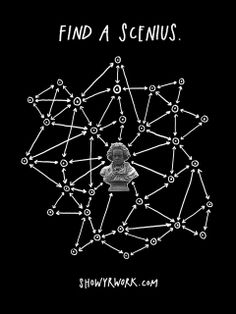
Read More
July 18, 2014

We partnered with a foundation as they built a network of leaders who shared a deep passion for their city. In the beginning, many of the leaders wanted to do something together quickly. We encouraged them to pause, build deeper relationships, and see what emerged. Read More
July 15, 2014
Thanks to Deborah McLaren for putting this slide show together that references the good work of June Holley, Chris Brogan, and Beth Kanter. I find that there are many people out there who naturally get the concept of “network weaving” and many others still who are still learning to understand its value, and to see it as a function of leadership in a networked world.
At IISC, we like to talk about “Facilitative Leadership” as a practice of “creating and inspiring conditions” that deliver on the promise of collaboration (innovation, rapid diffusion, equity, resilience, adaptation, etc.). In this vein, I particularly like what Chris Brogan suggests as the following leadership practice related to network weaving:
- Spend 20 minutes every day thinking about your network
- Spend 10 minutes every day cultivating your network
- Deliver 2 or 3 times as much value as you ask from your network
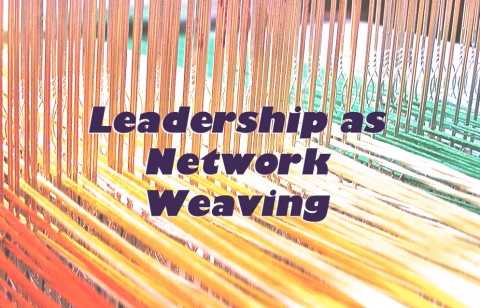
June 26, 2014
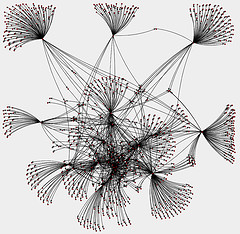
Picking up on the spirit of yesterday’s post about asking “beautiful questions” and inspired by a staff challenge to articulate lines of inquiry stemming from IISC’s core lenses, I offer this post. It distills some of the underlying questions that adopting a “network lens” inspires for social change work. Please add, adjust, edit, and rift!
- How does your organization/network/change initiative strive to add value to (rather than duplicate) existing efforts? What do you do best, and how might you then connect to the rest?
- What are you doing to support and strengthen connections and alignment within and beyond your organization/network/change initiative?
Read More
May 21, 2014

Photo by Waqas Mustafeez
A question I find myself asking quite a bit of those with whom I am doing network building and collaborative change consulting is some version of, “So whose party is this?” A change or developmental initiative may be born in the mind of a single person or small group of people. And she/he/they invite others to that party, her/his/their party. Then over time, the idea may arise on the part of the invitees that this isn’t just “your” party, but “ours” (collectively). This may not come up so much as a direct statement but through questions about and behavior around power dynamics, how the effort is framed, who to engage, etc. Now what? Depending upon the goal, sometimes your party needs to stay your party, and sometimes it needs to shift, through the emergence of a better question or opportunity. Of course, people may make the decision for you by taking the party with them. Or maybe there are two (or more) parties that ensue, in which case, the question becomes, if you are still welcome, “So whose party am I at right now?” The question is not simply meant to be about ownership, but intent, transparency and equity, and how people can show up in value-adding ways.
April 1, 2014
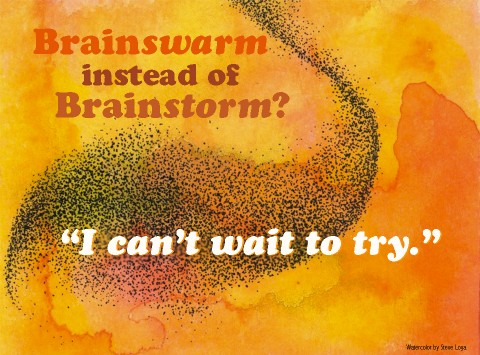
The recent barrage against the effectiveness of brainstorming has been a bit hard for those of us who are grounded in the Interaction Method. But evidence matters, doesn’t it? I know that Curtis has talked about the limits of brainstorming a couple of times in this blog. Read More
March 26, 2014

Over the last few weeks I have fielded a number of calls from people who are interested in figuring out how to develop different kinds of networks. I’m always eager to have these conversations, precisely because there is no single right answer, and it really comes down to a process of discovery and experimentation based on the unique nature of the network and system in question. That said, I do like to ask people the question, “What are you doing to feed your network?” Read More













